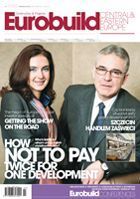After the collapse of one of the most spectacular – and foolish – property booms in history, Perhaps the panic wave that hit the world’s stock markets, and the nervousness over whether it might be repeated in China, was not the most appropriate responseNathan North, Mladen Petrov What does a real estate bubble look like? It’s hard to say. Alan Greenspan, the former chairman of the Federal Reserve, for example, believes one can see them only in retrospect. Looking back to autumn 2007, when the first signs of the credit crunch appeared, it is remarkable how almost every analyst and politician at the time reassured us that it wouldn’t significantly affect the US economy. When it later became clear that this wasn’t the case, the mantra was then amended to: “This should only affect the US and other Anglo-Saxon markets.” And when this also turned out to b






























































